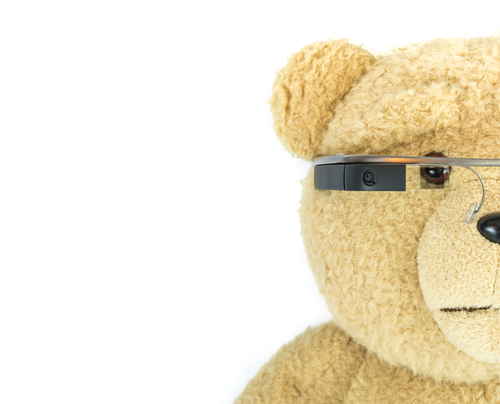Is Google Glass half-full or half-empty?

They’re only available (at $1,500-plus a pop) to select Explorers — Google’s own handpicked beta testers.
Depends on whom you ask. Google Glass will either be the biggest game changer in wearable technology, or a creepy Big Brother bust that sends people running for the exits. For those who’ve been living under a rock, Google Glass is essentially a smartphone worn as glasses.
It’s got 13 functions including hands-free camera/video/phone, Internet links, voice-activated text and commands (“OK, Glass, take picture.”), all in a heads-up display that keeps your eyes on the road or whatever/whoever is in front of you. You can even have prescription lenses. But you can’t have a pair yet. They’re only available (at $1,500-plus a pop) to select Explorers — Google’s own handpicked beta testers — who will gladly let you bid for theirs on Amazon or eBay.
Pricey? Absolutely. But there’s an even more costly downside, like the issues of privacy and facial recognition. Did you know Google Glass also takes pictures, silently, with the wink of an eye? Neither does the person you’re taking a picture of. They think you’re flirting. You’re actually photographing, without their permission. Kinda flies in the face of Google’s corporate motto, “Don’t be evil.”
Now the company is encouraging Google Glass users to wear them behind the wheel, even as states like Delaware, Illinois and Missouri are enacting legislation to prohibit the use of hands-free technologies while driving. Google, of course, is lobbying against such rules. “See no evil?” Five more states are considering similar bans. Drivers already have enough distractions, and that clinches the “half-empty” case for me.
But like it or not, geeks wearing Google Glass will go mainstream. If it’s already an episode on The Simpsons, you know it’s inevitable, and soon Glass heads will be as ubiquitous as heads-down smartphone users — in touch with augmented reality instead of with the people next to them. Oh well, at least their heads will be up.




